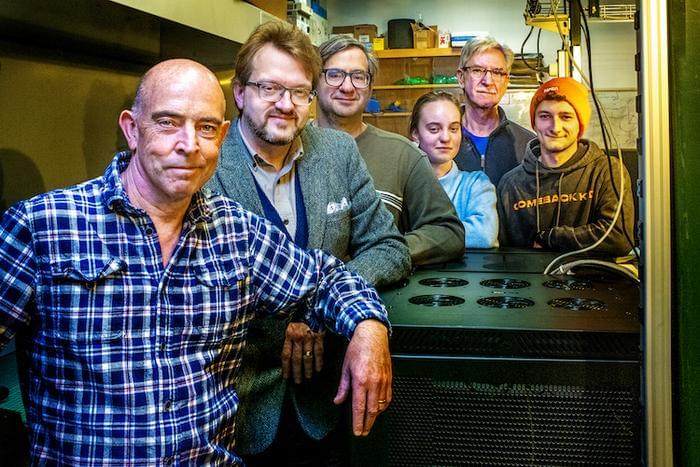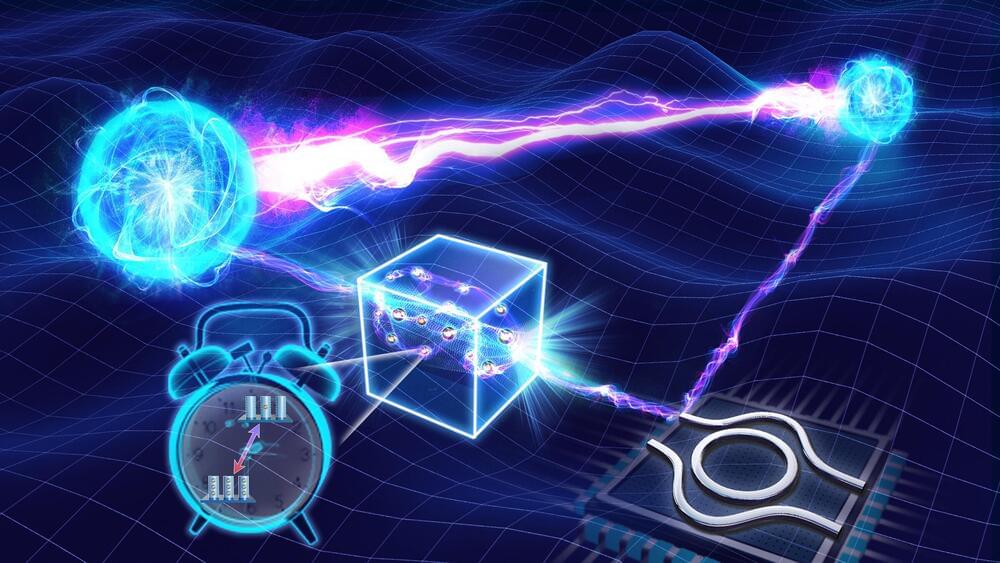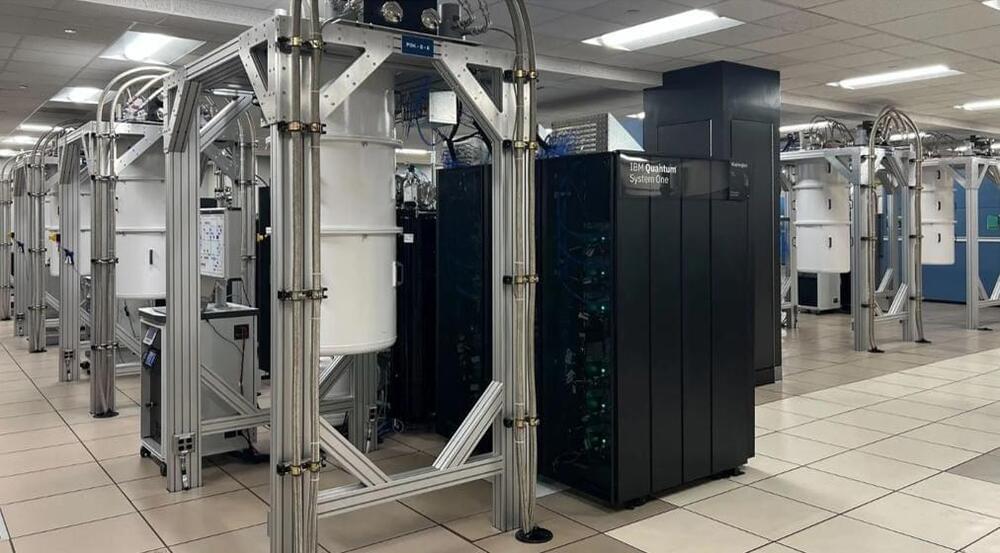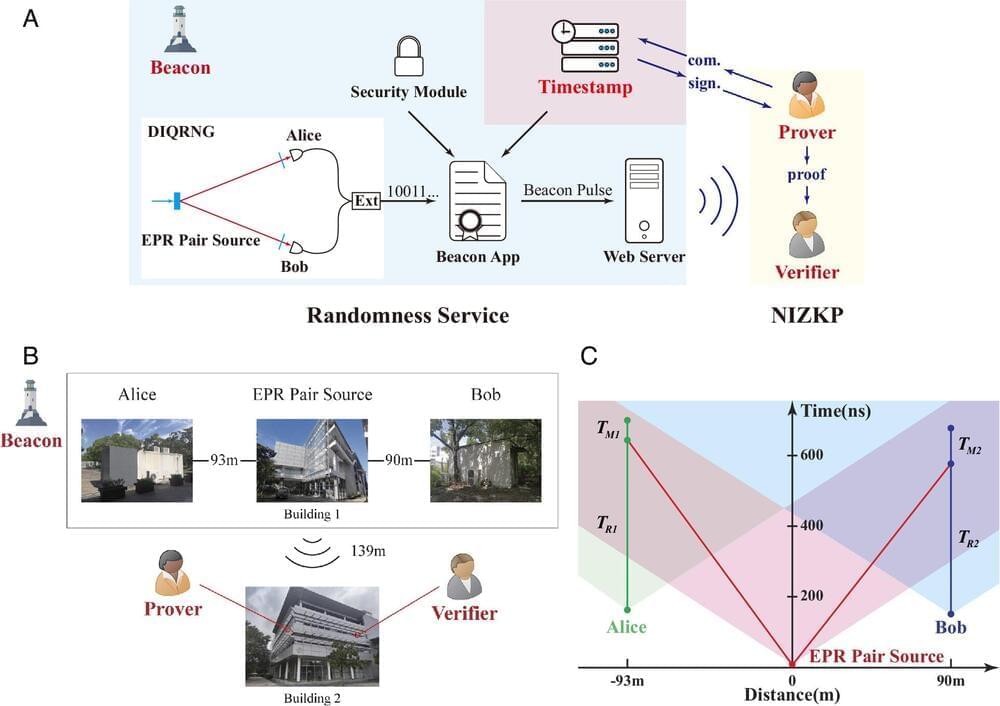Scientists develop ‘Targettrack’ to accelerate brain imaging research.
A team of scientists have developed a pioneering AI method to track neurons inside moving and deforming animals.
Scientists develop ‘Targettrack’ to accelerate brain imaging research.
A team of scientists have developed a pioneering AI method to track neurons inside moving and deforming animals.

Can technology be developed to identify small objects in space? This is something the U.S. Air Force hopes to address and they recently awarded a $5 million grant to a Georgia State University professor with the goal of identifying, charting, and imaging small objects in space, also known as Space Domain Awareness (SDA). This grant holds the potential to improve SDA regarding small objects between the Earth and the Moon, which could benefit national security as well as observational astronomy.
This grant comes as the number of objects launched into space continues to increase every year. For example, while the total of objects launched into space worldwide in 2016 was 221, that number jumped to 456 in 2017, experienced a slight decrease to 454 in 2018, increased to 586 in 2019, but then experienced massive spikes to 1,274 in 2020, 1,813 in 2021, and 2,478 in 2022, more than a tenfold increase in six years. So many objects not only pose threats to observational astronomy but to national security, as well.
“Detecting objects in the space region between where many communications satellites are located extending to the distance at which the Moon orbits the Earth presents a substantial challenge,” said Dr. Stuart Jefferies, who is a Professor in the Department of Physics and Astronomy at Georgia State University, and recipient of the grant. “The faintness of these objects makes observation difficult using ground-based telescopes, as they are starved of photons from the target of interest, creating a potential vulnerability that adversaries could exploit.”

Google’s adding a new garage door detection feature to its Nest security cameras that will alert you if your garage door has been left open. The company is also bringing the first-gen Google Nest Outdoor Cam to the Google Home app and finally allowing Nest Cam users to create custom clips in the Google Home app.
These new features are part of the Google Home app’s public preview and are rolling out this week. Adina Roth, product manager of Google Home & Nest, announced the updates in a blog post on Wednesday.

Quantum technologies are currently maturing at a breath-taking pace. These technologies exploit principles of quantum mechanics in suitably engineered systems, with bright prospects such as boosting computational efficiencies or communication security well beyond what is possible with devices based on today’s ‘classical’ technologies.
As with classical devices, however, to realize their full potential, quantum devices must be networked. In principle, this can be done using the fiber-optic networks employed for classical telecommunications. But practical implementation requires that the information encoded in quantum systems can be reliably stored at the frequencies used in telecom networks—a capability that has not yet been fully demonstrated.
Writing in Nature Communications, the group of Prof. Xiao-Song Ma at Nanjing University reports record-long quantum storage at telecom wavelengths on a platform that can be deployed in extended networks, paving the way for practical large-scale quantum networks.

It seems for every proponent for quantum computing there is also a detractor.
Given the amount of quantum computing investment, advancements, and activity, the industry is set for a dynamic change, similar to that caused by AI – increased performance, functionality, and intelligence. This also comes with the same challenges presented by AI, such as security, as outlined in the recent Quantum Safe Cryptography article. But just like AI, quantum computing is coming. You might say that quantum computing is where AI was in 2015, fascinating but not widely utilized. Fast forward just five years and AI was being integrated into almost every platform and application. In just five years, quantum computing could take computing and humanity to a new level of knowledge and understanding.
Follow me on Twitter or LinkedIn. Check out my website.
The author and members of the Tirias Research staff do not hold equity positions in any of the companies mentioned. Tirias Research tracks and consults for companies throughout the electronics ecosystem from semiconductors to systems and sensors to the cloud. Tirias Research has consulted for IBM, Intel Microsoft, Nvidia, Toshiba, and companies throughout the quantum computing ecosystem.

IonQ earns spot in the prestigious list of 119 innovative companies for innovation in quantum computing
COLLEGE PARK, Md., November 28, 2023 —(BUSINESS WIRE)— IonQ (NYSE: IONQ), an industry leader in quantum computing, today announced that it has been named to Fast Company’s third annual Next Big Things in Tech list, honoring technology breakthroughs that promise to shape the future of industries—from healthcare and security to artificial intelligence and data. This is IonQ’s first time appearing on the list.
“This recognition is not only a tremendous honor but a testament to the transformative impact and potential of our technology,” said Peter Chapman, President and CEO of IonQ. “IonQ is committed to advancing quantum computing capabilities to drive technological breakthroughs and solve complex business problems across industries. This award fuels our drive to continue pushing boundaries and breaking barriers.”

It comes 3 years after Amazon debuted its ‘handy’ authentication service for consumers.
Amazon’s cloud computing subsidiary AWS (Amazon Web Services) has lifted the lid on a new palm-scanning identity service that allows companies to authenticate people when entering physical premises.
The announcement comes as part of AWS’s annual Re: Invent conference, which is running in Las Vegas for the duration of this week.
Amazon One Enterprise, as the new service is called, builds on the company’s existing Amazon One offering which it debuted back in 2020 to enable biometric payments in Amazon’s own surveillance-powered cashierless stores. Visitors to Amazon Go stores can associate their payment card with their palm-print, allowing them to enter the store and complete their transaction by hovering their hand over a scanner.

Zero-knowledge proof (ZKP) is a cryptographic tool that allows for the verification of validity between mutually untrusted parties without disclosing additional information. Non-interactive zero-knowledge proof (NIZKP) is a variant of ZKP with the feature of not requiring multiple information exchanges. Therefore, NIZKP is widely used in the fields of digital signature, blockchain, and identity authentication.
Since it is difficult to implement a true random number generator, deterministic pseudorandom number algorithms are often used as a substitute. However, this method has potential security vulnerabilities. Therefore, how to obtain true random numbers has become the key to improving the security of NIZKP.
In a study published in PNAS, a research team led by Prof. Pan Jianwei and Prof. Zhang Qiang from the University of Science and Technology of China (USTC) of the Chinese Academy of Sciences, and the collaborators, realized a set of random number beacon public services with device-independent quantum random number generators as entropy sources and post-quantum cryptography as identity authentication.
https://www.hdiac.org/podcast/neuroweapons-part-1/
In part one of this two-part podcast, HDIAC analyst Mara Kiernan interviews Dr. James Giordano, a Professor in the department of Neurology and Biochemistry at Georgetown University Medical Center. The discussion begins with Dr. Giordano defining neuroweapons and explaining their applied technologies. He provides insight into the manner in which international weapons conventions govern the use neuroweapons and discusses the threats presented by neuroweapons in today’s environment. Dr. Giordano goes on to review the need for continuous monitoring, including his views regarding challenges and potential solutions for effectively understanding global developments in neuroweapon technologies.
Watch regular HDIAC webinars and video podcasts by subscribing:
Become a member of the Homeland Defense and Security Information Analysis Center: https://www.hdiac.org/register/
Visit: www.hdiac.org.
Follow: https://www.instagram.com/dod_hdiac/
Like: https://www.facebook.com/DoDHDIAC/
Tweet: https://twitter.com/DoD_HDIAC
Connect: https://www.linkedin.com/company/dodhdiac

Cloudflare, the leading content delivery network and cloud security platform, wants to make AI accessible to developers.
While developers can use JavaScript to write AI inference code and deploy it to Cloudflare’s edge network, it is possible to invoke the models through a simple REST API using any language. This makes it easy to infuse generative AI into web, desktop and mobile applications that run in diverse environments.
In September 2023, Workers AI was initially launched with inference capabilities in seven cities. However, Cloudflare’s ambitious goal was to support Workers AI inference in 100 cities by the end of the year, with near-ubiquitous coverage by the end of 2024.
Cloudflare is one of the first CDN and edge network providers to enhance its edge network with AI capabilities through GPU-powered Workers AI, vector database and an AI Gateway for AI deployment management. Partnering with tech giants like Meta and Microsoft, it is offering a wide model catalog and ONNX Runtime optimization.